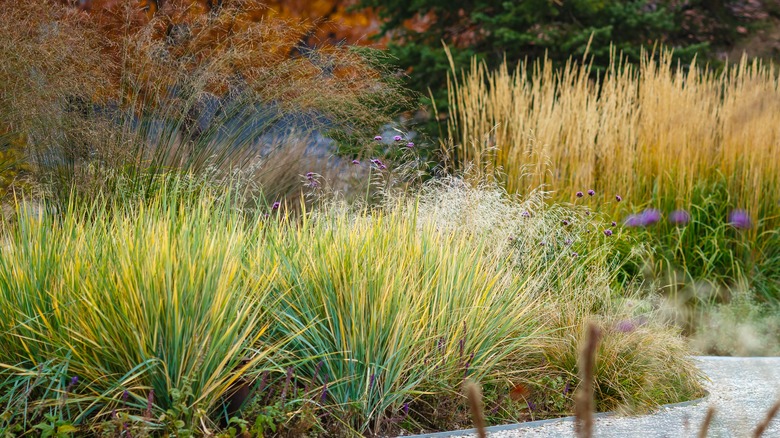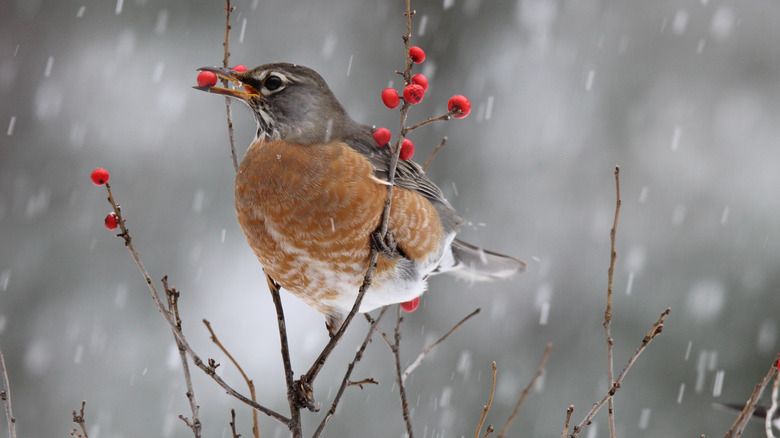Bird Watchers May Want To Think Twice Before Trimming Up The Yard This Fall
While the look of a freshly trimmed and impeccably maintained landscape might appeal to most homeowners, it can be a deterrent for hungry birds in search of food and shelter. This is especially true when winter rolls around and valuable resources become scarce for overwintering wildlife. If you're trying to provide a wintry haven for birds, keep dead trees and piles of brush in your yard, as they provide places to nest and a bountiful source of food (primarily insects). Birds also use these cave-like nooks and brush piles to hide during storms.
Luckily for birds, a wide variety of native plants in your area are likely perfect for grabbing a quick bite in the cold of winter. So, if you've caught the birding bug, you'll want to reconsider giving your lawn that fall manicure and opt for some overgrown perennials and native shrubs instead. Maintaining the presence of wild plants native to your region acts as an incentive for birds to visit. Not only do they provide shelter, but they act as a critical component of the natural food chain since they provide food to native insects, a vital food source for mother birds raising their young.
Creating an oasis for birds
Over the past few years, the number of new amateur bird watchers has been on the rise. From landlocked cities to coastal towns, more people are experiencing the joy and entertainment offered by this unique, budget-friendly hobby. However, birds are unlikely to visit your yard during the coldest months if it lacks the things they need to survive.
If you have a bird feeder, you've probably already learned how crucial it is to provide the birds in your area with their preferred food. However, while feeders are a great source of supplemental nutrition, most birds would rather forage for their meals. To join in on the fun, recreate birds' natural habitat in your yard by using perennials like purple coneflower, winterberry, northern bayberry, and flowering dogwood. Be sure to let these go untrimmed: They provide food during the fall and winter months when other food sources are scarce. After that, all you need to do is add a source of clean water (like a DIY bird bath), preferably in a stone or concrete basin, and you'll have birds flocking to your garden for a winter respite.

